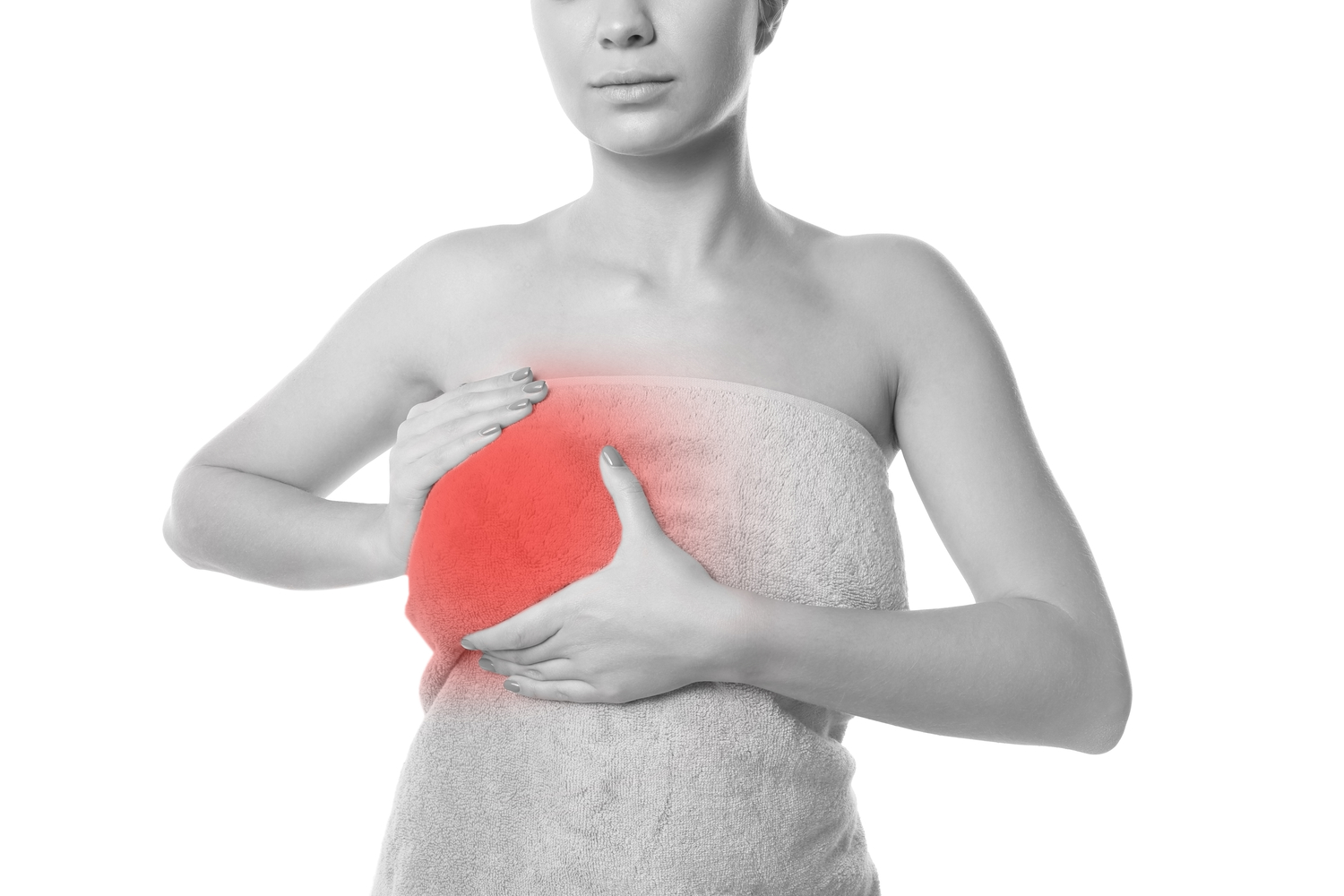Comprehensive Guide to Breast Discomfort: Causes, Symptoms, and Effective Management Strategies
This comprehensive guide explores the causes, symptoms, and management strategies for breast discomfort. It highlights common issues such as hormonal fluctuations, benign and malignant tumors, and lifestyle factors. The article emphasizes the importance of medical evaluation, self-care tips, and when to seek immediate healthcare. Suitable for women seeking to understand and manage breast pain effectively, it offers practical advice and detailed information on different types of discomfort, their symptoms, and treatment options, promoting better health awareness and proactive care.

A Complete Understanding of Breast Discomfort: Causes, Symptoms, and Management
Breast discomfort, medically known as mastalgia, is a common concern affecting many women worldwide. It manifests as a variety of sensations, including tenderness, dull aches, burning, heaviness, tightness, and even sharp pains in the breast and underarm areas. Recognizing and understanding the underlying causes of these symptoms is crucial for effective management and peace of mind. According to the Breast Cancer Foundation, any pain or discomfort in the breast or surrounding regions should be taken seriously, as it could signal benign issues or more serious health concerns. Research from California Pacific Medical Centre indicates that up to 70% of women report experiencing some form of breast discomfort at different points in their lives, making it a prevalent condition that warrants attention and proper care.
Principal Causes of Breast Discomfort:
Cysts or benign growths within the breast tissue, often causing localized pain or lumps.
Issues related to the chest wall, including inflammation or muscle strain.
Gastrointestinal conditions such as reflux can sometimes radiate pain toward the chest and breasts.
Chronic conditions like fibromyalgia, which causes widespread musculoskeletal pain.
Blood clots, especially in the lungs, which can cause chest pain and discomfort mimicking breast pain.
Trauma or injury to the breast due to accidents or impacts.
Breast malignancies, including benign and malignant tumors, which may cause persistent or worsening discomfort.
Liver-related issues linked to excessive alcohol intake, leading to systemic symptoms including breast pain.
Infections like Bornholm disease, which can cause chest and breast pain.
Hormonal fluctuations occurring during puberty, menstrual cycles, pregnancy, or menopause.
Rib injuries or inflammation, which can refer pain to the breast area.
Herpes zoster (shingles), which may produce pain along nerve pathways.
Shoulder or chest wall pain, often related to musculoskeletal problems.
Sickle cell anemia, which can cause pain episodes affecting various parts of the body, including the chest.
Heart-related issues such as blocked arteries, angina, or pericarditis that may cause chest and breast discomfort.
Stress, anxiety, and depression, which can exacerbate physical symptoms, including breast pain.
Benign and malignant breast tumors that can cause palpable lumps and discomfort.
Spine issues in the neck and back that refer pain to the chest and breast regions.
Costochondritis, inflammation of the cartilage between ribs, causing chest pain that may be perceived as breast discomfort.
Dietary factors, especially high caffeine intake, which might influence cyclical breast pain.
Breastfeeding-related infections such as mastitis, often leading to localized pain and swelling.
Medication side effects, which can include muscle or nerve pain.
Digestive ulcers and other gastrointestinal conditions influencing chest and breast sensations.
Inflammation of the heart lining or lung lining, including pericarditis and pleurisy, contributing to chest pain perceptions.
Pregnancy-related changes, including hormonal and physical adjustments causing discomfort.
Understanding the Types of Breast Discomfort:
Cyclical Breast Discomfort:
This type of pain is closely linked to the menstrual cycle. It predominantly affects the outer parts of the breasts and the underarm areas. Women often notice that the discomfort intensifies 2 to 3 days before their period and peaks during menstruation. The cyclical pain is usually associated with hormonal fluctuations, primarily estrogen and progesterone levels, which cause the breasts to swell and become tender. Such discomfort is generally bilateral, meaning it affects both breasts, and may be accompanied by feelings of heaviness, lumpy sensations, and burning or stabbing pains.
Non-cyclical Breast Discomfort:
This form of discomfort is unrelated to menstrual cycles and can occur at any time. It is more common among women aged 40 to 50 and often manifests as localized pain in one breast, which may radiate to adjacent areas like the rib cage or shoulder. Unlike cyclical pain, non-cyclical discomfort can be persistent, varying in intensity and duration depending on underlying causes, such as benign tumors, infections, or other medical conditions.
Symptoms and Clinical Features:
Symptoms of Cyclical Females:
The pain usually correlates with the menstrual period. Women often report swollen, lumpy, and tender breasts that feel uncomfortable to the touch.
Tenderness accompanied by burning, stabbing sensations, heaviness, and dull aches is common.
The pain typically affects both breasts and may radiate to the armpits or shoulders.
Symptoms tend to start a few days prior to menstruation and worsen during the initial days of a woman’s period.
Younger women are more frequently affected by cyclical breast pain.
Symptoms of Non-cyclical Discomfort:
This type generally begins in one breast, then gradually affects the other if it persists.
It's prevalent in women post-menopause, who often experience persistent or intermittent pain without a clear hormonal trigger.
The duration can range from days to months and depends heavily on potential underlying causes like cysts, infections, or tumors.
How to Manage Breast Discomfort and When to Seek Medical Help:
Over-the-counter analgesics, such as ibuprofen or acetaminophen, can effectively reduce cyclical pain.
Wearing well-fitted, supportive bras all day and night can alleviate strain and discomfort.
During physical activities, opt for sports bras designed to minimize breast movement and provide additional support.
Limiting caffeine intake may help in reducing cyclical breast pain for some women.
Avoid smoking, as it can affect overall breast health and exacerbate discomfort.
Consult a healthcare provider for proper diagnosis if discomfort persists or worsens.
Medical evaluation may involve imaging studies like mammograms or ultrasounds to rule out structural abnormalities.
Specific treatments such as hormonal therapy may be prescribed in certain cases, especially if hormonal fluctuations are identified as a key factor.
Physical therapies, including massage and physiotherapy, can help manage non-cyclical or musculoskeletal-related breast pain.
Immediate medical attention is crucial if you observe:
Changes in nipple appearance, such as inversion or alterations in color or texture
Unusual skin changes like dimpling, redness, or swelling
Nipple discharges, especially if bloody or persistent
Noticeable changes in breast size or shape
Persistent or severe pain in breasts or underarm regions
Palpable lumps, swelling, or enlarged lymph nodes in the armpits
Self-help and Prevention Tips:
Wear supportive, well-fitted bras consistently, including during sleep if necessary.
Use sport-specific bras during exercise to prevent strain and discomfort.
Reduce caffeine consumption, especially if you notice a correlation with increased discomfort.
Avoid smoking to promote overall breast and general health.
Maintain a healthy diet and regular exercise regimen to support hormonal balance and tissue health.
Breast discomfort is a widespread issue that can significantly impact quality of life. Recognizing early signs, adopting preventive measures, and seeking medical advice promptly can help manage symptoms effectively, reducing anxiety and preventing serious complications. Regular breast self-examinations and routine screenings are vital components of women’s health care.





